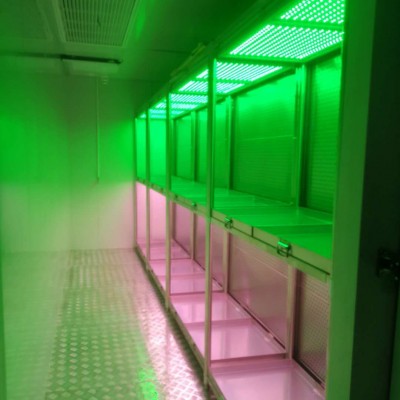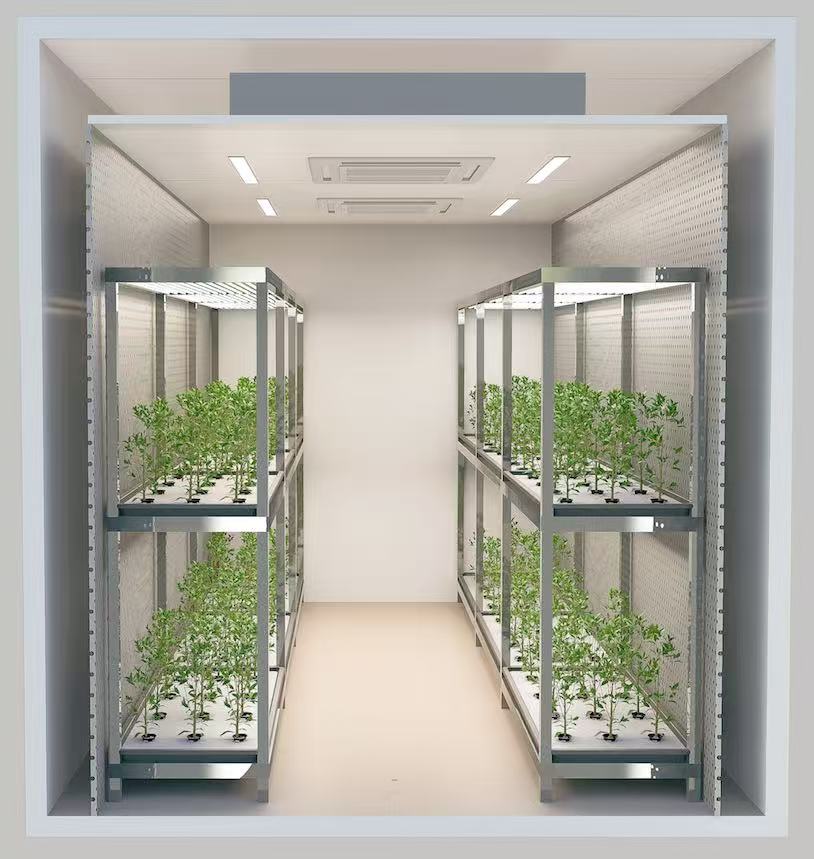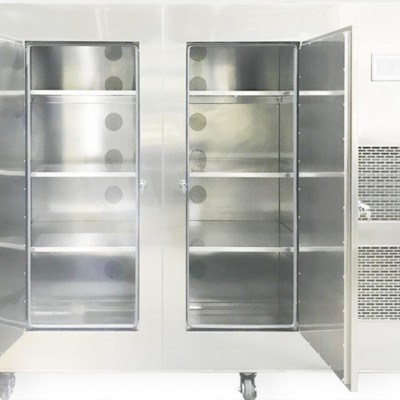Mechanism of reducing physiological damage of lettuce under continuous LED red and blue light irradiation by alternating light quality
Author:byu7043690063 Views:277 Updated:2025-03-24
Basic information of the paper
Title: Mechanism of Reducing Physiological Damage of Lettuce under Continuous LED Red and Blue Light Exposure by Alternating Light Quality
Journal: Journal of China Agricultural University, Volume 29, Issue 10, 2024
Authors: Liu Wenke, Liu Jiayuan (Institute of Agricultural Environment and Sustainable Development, Chinese Academy of Agricultural Sciences/Key Laboratory of Energy Conservation and Waste Management in Facility Agriculture, Ministry of Agriculture and Rural Affairs)
Research background and purpose
Core issue: Continuous exposure to LED red and blue light (CL) can easily cause physiological damage to vegetables, such as accumulation of reactive oxygen species and membrane lipid peroxidation. It is necessary to explore the mechanism of light quality alternation (CL-A) in reducing damage.
Scientific objective: To verify whether light quality alternation can alleviate the negative effects of continuous light exposure by regulating carbohydrate metabolism and oxidative stress response.
experimental design
Environmental conditions:
Plant factory controlled environment, hydroponic lettuce.
Six samples were taken day and night (three times at 6-hour intervals during bright periods and three times at 2-hour intervals during dark periods).
Light treatment:
NL (conventional illumination): 400 μ mol/(m ² · s), photoperiod of 18h/6h, red to blue light ratio of 4:1.
CL (continuous illumination): 300 μ mol/(m ² · s), light period of 24h/0h, red to blue light ratio of 4:1.
CL-A (alternating continuous illumination): red light at 320 μ mol/(m ² · s) for 18 hours and blue light at 240 μ mol/(m ² · s) for 6 hours.
Key Results
Indicator NL CL CL-A Trend
The average minimum and maximum CL-A of fresh weight above ground were significantly better than those of CL and NL
Medium minimum maximum light quality alternation between leaf area and crown width promotes morphological expansion
Leaf damage level moderate, highest, lowest CL-A effectively alleviates physiological damage
Low to medium high starch/sucrose content CL-A>CL>NL
DPPH radical scavenging rate is low, moderate to high, and antioxidant capacity is significantly improved
Moderate and highest content of H ₂ O ₂/MDA reduces CL induced oxidative stress, while CL-A alleviates it
Low superoxide anion (O ₂⁻) first increases, then decreases, and continues to increase. Light quality regulation affects free radical dynamics
Conclusion and Value
Core findings:
Light quality alternation (CL-A) significantly reduces the accumulation of reactive oxygen species (H ₂ O ₂, MDA) induced by continuous light exposure through red blue temporal regulation, and enhances antioxidant capacity (DPPH) and carbohydrate synthesis efficiency.
Under CL-A treatment, lettuce biomass increased by 15-20% and leaf damage levels decreased by over 50%.
Application significance:
Provide theoretical basis for the synergistic optimization of photoperiod and light quality in plant factories, and assist in energy-saving and efficient production.
The light quality alternation strategy can be extended to other leafy crops to alleviate physiological stress caused by continuous artificial light irradiation.
keyword
Lettuce | Continuous light | Light quality alternation | Carbohydrate metabolism | Reactive oxygen species | Membrane lipid peroxidation
Research Highlights
Innovation point: For the first time, the physiological protective mechanism of light quality alternation (non single light quality) under continuous light exposure has been revealed.
Methodology: Combining day night dynamic sampling and multi index joint detection (ROS, MDA, glucose metabolism), comprehensively analyze the pathway of injury relief.
Title: Mechanism of Reducing Physiological Damage of Lettuce under Continuous LED Red and Blue Light Exposure by Alternating Light Quality
Journal: Journal of China Agricultural University, Volume 29, Issue 10, 2024
Authors: Liu Wenke, Liu Jiayuan (Institute of Agricultural Environment and Sustainable Development, Chinese Academy of Agricultural Sciences/Key Laboratory of Energy Conservation and Waste Management in Facility Agriculture, Ministry of Agriculture and Rural Affairs)
Research background and purpose
Core issue: Continuous exposure to LED red and blue light (CL) can easily cause physiological damage to vegetables, such as accumulation of reactive oxygen species and membrane lipid peroxidation. It is necessary to explore the mechanism of light quality alternation (CL-A) in reducing damage.
Scientific objective: To verify whether light quality alternation can alleviate the negative effects of continuous light exposure by regulating carbohydrate metabolism and oxidative stress response.
experimental design
Environmental conditions:
Plant factory controlled environment, hydroponic lettuce.
Six samples were taken day and night (three times at 6-hour intervals during bright periods and three times at 2-hour intervals during dark periods).
Light treatment:
NL (conventional illumination): 400 μ mol/(m ² · s), photoperiod of 18h/6h, red to blue light ratio of 4:1.
CL (continuous illumination): 300 μ mol/(m ² · s), light period of 24h/0h, red to blue light ratio of 4:1.
CL-A (alternating continuous illumination): red light at 320 μ mol/(m ² · s) for 18 hours and blue light at 240 μ mol/(m ² · s) for 6 hours.
Key Results
Indicator NL CL CL-A Trend
The average minimum and maximum CL-A of fresh weight above ground were significantly better than those of CL and NL
Medium minimum maximum light quality alternation between leaf area and crown width promotes morphological expansion
Leaf damage level moderate, highest, lowest CL-A effectively alleviates physiological damage
Low to medium high starch/sucrose content CL-A>CL>NL
DPPH radical scavenging rate is low, moderate to high, and antioxidant capacity is significantly improved
Moderate and highest content of H ₂ O ₂/MDA reduces CL induced oxidative stress, while CL-A alleviates it
Low superoxide anion (O ₂⁻) first increases, then decreases, and continues to increase. Light quality regulation affects free radical dynamics
Conclusion and Value
Core findings:
Light quality alternation (CL-A) significantly reduces the accumulation of reactive oxygen species (H ₂ O ₂, MDA) induced by continuous light exposure through red blue temporal regulation, and enhances antioxidant capacity (DPPH) and carbohydrate synthesis efficiency.
Under CL-A treatment, lettuce biomass increased by 15-20% and leaf damage levels decreased by over 50%.
Application significance:
Provide theoretical basis for the synergistic optimization of photoperiod and light quality in plant factories, and assist in energy-saving and efficient production.
The light quality alternation strategy can be extended to other leafy crops to alleviate physiological stress caused by continuous artificial light irradiation.
keyword
Lettuce | Continuous light | Light quality alternation | Carbohydrate metabolism | Reactive oxygen species | Membrane lipid peroxidation
Research Highlights
Innovation point: For the first time, the physiological protective mechanism of light quality alternation (non single light quality) under continuous light exposure has been revealed.
Methodology: Combining day night dynamic sampling and multi index joint detection (ROS, MDA, glucose metabolism), comprehensively analyze the pathway of injury relief.
Industry value: Providing low-cost and easy-to-use solutions for precise regulation of LED lighting environment.







